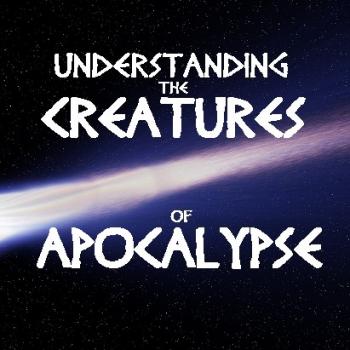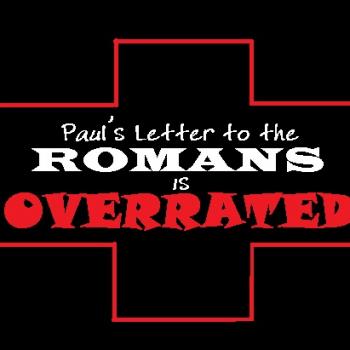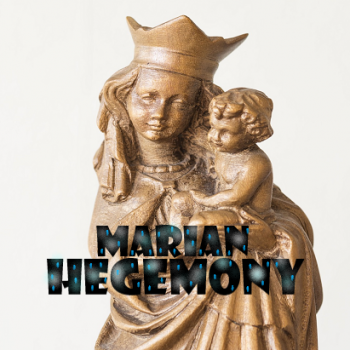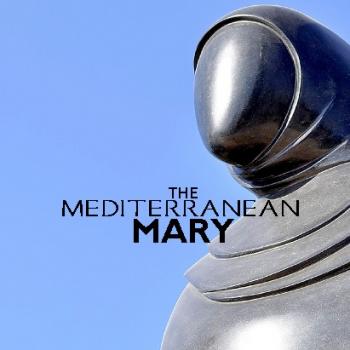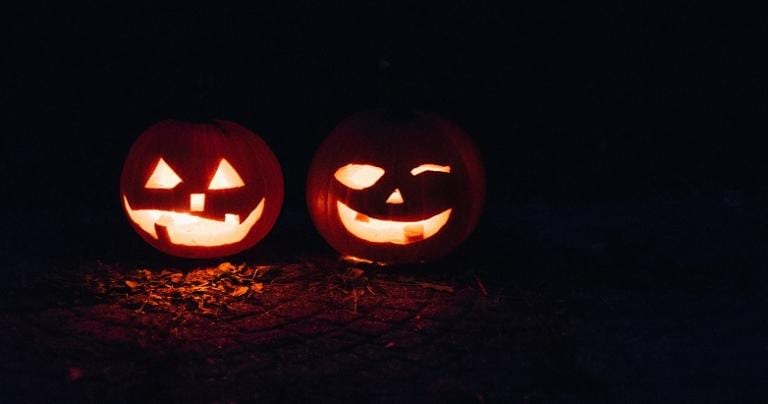
Halloween, Harry Potter, and Amazon Statues are Pagan and evil says Catholic fundamentalists, conveying a diametrically opposed paradigm to the sacramental vision of the Church.
Halloween time twelve years ago, someone Catholic informed me that All Hallow’s Eve is Satanic. She said it was an Anglo-Saxon fantasy of wickedness, a dance macabre, a black mass for witches and demons, a return to Paganism, and a holiday for disguises. She said Halloween is indecent and morbid, that Catholics who celebrate it have been devilishly tricked. Oh yeah, she hates Harry Potter too and “the witch who writes those books!”
When I asked her to tell me what was good about Halloween, she stared at me bewildered. Our conversation halted when she then insisted I get onto my knees for her to conduct a spontaneous prayer of deliverance over me.
We really haven’t spoken since.
Some years later when a Halloween-themed youth group event was cancelled due to a hurricane threat, a daily communicant mom called me on the phone. “Why do think God sent this storm along this path?” she inquired. “It’s because He didn’t want you to expose those precious children to Satanic Paganism.”
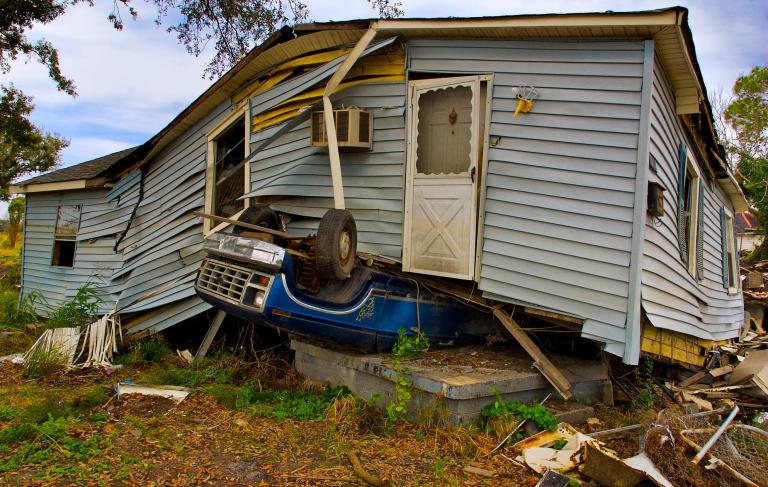
I couldn’t resist responding, “Is that why our Storm God drove the hurricane along a directional pathway that killed several poor black Island people, ma’am? Was it to drive home the message to me that Halloween is bad?”
Halloween Holy Madness
I find myself remembering these exchange each year in late October. I can’t help but recall the attitude shared by both women in light of the destruction of the female indigenous statues this week in Rome, the location of the Amazon Synod. A pair of white males, imagining themselves saviors of orthodoxy, stole and destroyed indigenous images. They gleefully recorded their “heroic” crime.
I can understand, believe me. Once upon a time about 20 years ago, I helped “liberate” a sister from the Santeria tradition. I destroyed her statue of Chango, which I denigrated as Mister Potato Head. Not unlike these two “heroes,” I thought I was saving a lost soul and destroying something evil. In reality I was just pooling ignorance, both hers and my own, about her own tradition which came from a long lineage of NON-EUROPEAN ways of expressing the spiritual.
You see I was once zealous with fundamentalism. I lived in my car suffering from PTSD. I had came back to the Church homeless. It was a terrifying yet wonderful time of serotonin and dopamine fluctuations. When you are homeless, even at Mass, folks look at you like you are the incarnation of feces. Having just been reconciled, I got attacked inside a bookstore by a couple of anti-Catholic bigots. So I reacted and became them, Catholic-style. Thank God this only lasted some years instead of a lifetime.
But even back then I never hated Halloween. It had brought me much joy over the years, as a free-spirited non-religious kid, and for years following my rushed Confirmation as a self-professed atheist. My lifelong fondness for scary, creepy, and shadowy folk lore and ghost stories was not diminished by my return to the Church at 25. Too much of that was in me, marinated to the bones, to ever loathe JK Rowling or Stephen King. But I was truly a colossal jackass in many other ways.
Christianity and the Pagan
Speaking of marinades, Christianity is soaked to the bones with the Pagan. All things are. It is inescapable. If you are human, you are touching the Pagan right now. Learn to love it because there is simply no religion or human expression that is chemically isolated from the Pagan.
Yes, Halloween has Pagan roots. So does Christmas (Yule and Winter Solstice). So too does Easter (Estron the Spring god). So too all the candles of Advent and the holly wreaths and decked out halls. So too old Saint Nick (who never historically punched Arius), better known as the jolly old elf Santa Claus (or should I say pilgrim Thor or Odin in disguise?). So too does the chocolate you eat at Easter (divine food taken from the sun worshipers of the New World butchered by self-proclaimed Christians of empire). So do our wedding rings. And on and on it goes.
Every Day is Pagan
The whole week comes from different pantheons of Pagan gods. Our Biblical ancestors were not Christians (ca. 325 CE) nor were they Jews (ca. 500 CE). Stop placing severe monotheism in their texts. Monotheism of any sort is a biblical rarity!
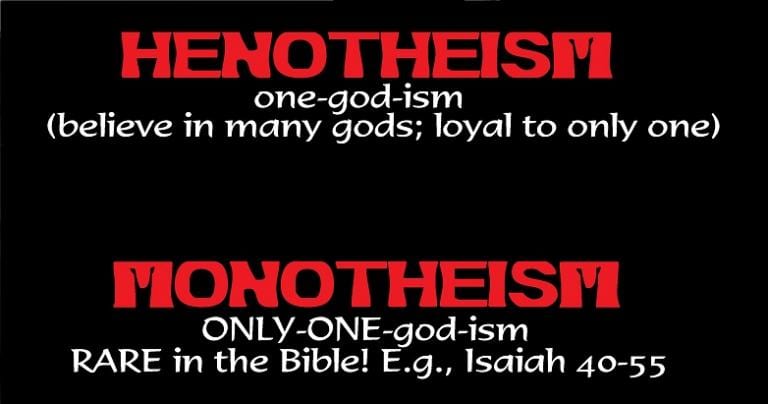
New Testament communities were mostly henotheistic, Israelites honoring God’s sky servants while adoring only their Patron God of Israel. They knew well of the seven glorious “wanderers” on the Ecliptic Pathway in Sky Vault, God’s sky servants. The book called “Reveation” showcases this on every page! We still maintain a ghost of this ancient tradition, birthed in the Pagan, filtered by many Pagan and polytheistic sky lore traditions.
Counting the Pagan Days
We celebrate the Pagan origins of our week every day! Consider Sunday, or better, “the Day of the Sun,” and Monday, “the Day of the Moon,” called “lunes” in the Spanish tongue. Can we forget about Tuesday, or Tiu’s Day, the day dedicated to the Germanic god of war? Latino/a communities call it martes for “Mars” the Roman war-god.
And don’t forget what we name “hump-day”—Wednesday. That’s Wotan’s Day, that is, “the Day of Odin” who in Norse myth rode his swift eight-legged horse Sleipnir. But Spanish-speakers call the fourth day of the week “miércoles” remembering the Mediterranean messenger-deity Mercury (as in mercurial) called by the Greeks Hermes, the speedster-god. After Wednesday, everything goes quickly to the weekend, no?
https://www.youtube.com/watch?v=EkzRK182UP0
Marvel fans should always remember the origin of Thor’s Day, I mean Thursday. Or would it be more “orthodox” to call it jueves after all things Jovian as in (by Jove!) Jupiter, which comes from the Greek Zeus-Pater, “O Zeus Father”? This is followed by Friday or Freya’s Day or Venus’ Day if you call it viernes. And then at the end we have Saturn’s Day, or Saturday, or sabado. In ancient Hebrew the word for the planet Saturn is Shabbathai—from the Babylonian Saccuth. Anything Hebrew is already blended with the Pagan.
Stormtroopers for Orthodoxy
Forgive me, but where are the two heroic men who stole and destroyed the statues when it comes to the days of the week? I don’t hear them or their ilk complaining about these pagan feast days, and we celebrate each of them about 52 times per year. We all use these Pagan and polytheistic names of the days every day of our lives! Surely this is a more pressing concern, yes?
But no. Let’s get upset about female images. Or let’s get riled up about Harry Potter, find demons in everything scary, and get enraged about Halloween. Let’s get upset about seeing the holy in the feminine and in culturally-specific ways different from the acceptable norm, which, conveniently, means white, European, and wealthy.
Fundamentalism: Fundamentally Opposed to Sacramentality
It is tragic when Catholics approach things with a fundamentalistic condemning “there is ABSOLUTELY nothing good about it” attitude. Such a position is ontologically absurd. It is also diametrically opposed to sacramentality, the essentially Catholic principle that sees God in ALL things.
As illustrated by far greater writers than I at Catholic Patheos, Henry Karlson here, and here, and Mary Pezzulo here, and here, in sacramentality, the early Church saw truth, goodness, and beauty in the Pagan feasts, symbols, and practices. So she baptized them, brought out Christ in them. It turns out that Sol Invictus, the Winter Solstice Feast of the Unconquerable Sun was REALLY about the truly unconquerable light of the World, Christ the Son. Our calendar we share with the polytheists and pagans became our catechism. The Pagan Winter Solstice is a fitting time to celebrate Christ’s nativity.
Holy, or Silly, Alternatives to Halloween?
I have a rather intense exposure to parish life. I grow weary of something becoming quite popular these days, namely “holy alternatives to Halloween,” where kids dress up as kitsch versions of Catholic saints and biblical characters. Frankly I find this terribly silly. In a way, it’s dangerous also, for reasons I will get to shortly.
This was the kind of “saint dress-up” activity promoted by the lady who thought God moved a hurricane to prevent my damnable Halloween corrupting youth group night. So important stopping my devilish evil was to the Almighty that He decided to plow his storm right through the poor islands, taking lives. How important I must be for God to go through all that trouble, huh? By the way she’s a 30-year veteran catechist and every night watches EWTN.
We don’t need any fake, “trying too hard,” Holy-Halloweens, fellow Catholics! Halloween is already Christian! Halloween is Samhain, but born again, baptized. Seeing Christ in all things is not putting new significance into all things. Amen, Christ IS the significance of all things. That’s all things, goblins and vampires and even devils too. All things come from him and were made by him, right?
But what about the death-themes, and the fearsome aspects that comes straight from Paganism? As far as the meaner side to Halloween’s pagan style, well, our Western wedding ceremonies have a very Pagan style, certainly not Jewish or ancient Israelite! But long ago our ancestors removed any elements impossible to harmonize with Christianity (animal sacrifice, etc.). The reasons have evolved also. Same thing with Halloween. Our American reasons for celebrating Halloween as we do it are not the same thing as those behind ancient Celts celebrating Samhain.
Halloween through Sacramental Eyes of Faith
Let’s get real about scary things. We are all going to die. All of us are going to rot away, unless cremated. Christ’s resurrection and kingdom are not alternatives to death and the terrifying existential aspects of being alive. Easter happens through Good Friday, not against it, not instead of it. Sacramentality is here to help us see again. In baptism, sacramentally, we celebrate death (Romans 6). We should see death for what it is, for all living is dying (the Cross).
Beware of anything masquerading as Christianity that constantly finds the devil in everything. To see what I mean, come take a look at secular Halloween—something good!—through a sacramental vision. Catholics after all have been given a sacramental vision, eyes that can see the eternal in history, the transcendent in the immanent, spirit in matter, the infinite in the finite, and the divine in the human.
What if we exposed our secular American Halloween to Catholic sacramentality? Should we examine Halloween with eyes of faith, what could we see?
Halloween Scary Costumes
First, let’s check out the costumes on children Halloween night. Among the many non-scary possibilities are the usual ghoulish selections. Each terrifying monster and ghost we see is more interesting than the next; everyone is different, out in the dark night. Even though unintended, this can speak about sin and its social effects.
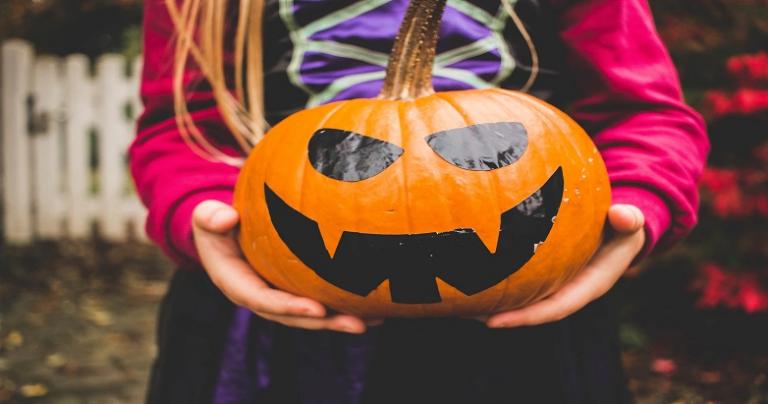
Sin disfigures us, separates us, like the denizens of Halloween. Sin alienates us from God, from one another, and from ourselves. Sin makes us wear masks and deceive ourselves. Sin is like the night; it is dark, obfuscating. This is a good reminder. There is something very real about this aspect of Halloween!
Under the Costumes and our Mother
But let’s not forget that under all that ghastly masking and makeup are children. No matter how ugly and hideous we appear to one another, we are all really deep down lovable children. More than that, we are terminally ill children, all. Let’s return to that momentarily.
Consider a band of trick-or-treaters. They are not alone in the night of monstrous griefs and anxieties. Their very human mother is out with them, comforting them and sharing in human joy and hope. She is in the world, not against it and not next to it, but in the modern world with her children. And this is a great thing.
Who is Our Neighbor?
Up ahead is the neighbor’s house where a jack-o-lantern beckons with its skull-like light. The carved pumpkin evokes a peculiar marriage: the harvest and the grave, Pagan and Catholic themes pertinent to immanent November. Jim Henson of SESAME STREET and THE DARK CRYSTAL was right—we shouldn’t hide all death and scary stuff from our children. Human maturation depends on seeing oneself and everyone else as something like a fellow dying inmate in the mental asylum that is our world.
Death is so important—all living is dying. Without death, can we really be human? How could we be human if we cannot love? Love always involves a dying to self. Love and death are inseparable. Death in the human being fully alive, Jesus Christ, is the Paschal mystery of love. From the earliest Jesus groups, the harvest feast has been associated with resurrection and the kingdom.
Halloween Treats
“Trick or treat!” The neighbor opens the door and gives us monstrous children a treat, “interpreted” and given to us at the right time (we hope) by Mom. Eyes of Faith reveal Jesus is our neighbor who gives us the sweetness of his divine life.
Home we children go. Our mother (the whole Church, did you get that?) divests us of our hideous masks and bathes us (baptism) and we delight in delicious sweets—what does food point to, sacramental Catholics? And there we are at home, on Halloween night, as saints, for ‘All-the-Saints’ really are just children anyway, right?
Admittedly this is but one way, of many really, to look at Halloween. There are other ways, both healthy and not so healthy. Among the unhealthy ways there are piteous views hat look for the holy in only the explicitly and bluntly Christian. Worst of all, are fanatical and racist views excluding religious expression or goodness to only what is the cemented colonizing picture and identity theft of Jesus and his holy ones, like that of the so-called heroes who destroyed the female images in Rome this week. Like myself years ago with something I didn’t understand or care to understand.
Make-Believe Holiness
It is so difficult for me to understand why so many U.S. Catholics go around re-inventing the wheel each October 31st and dressing their kids up like Kitsch renditions of holy ones for “alternatives to Halloween.” I wonder: have they forgotten that saints are real people living through often terrifying trials?
Heaven forbid the children forced to pretend to be cheap renditions of stain-glass window imagery in this “celeb-reality” age actually think that holiness is just a mask we wear, a game of pretend or dress-up, and hence something totally unrelated to real human life.
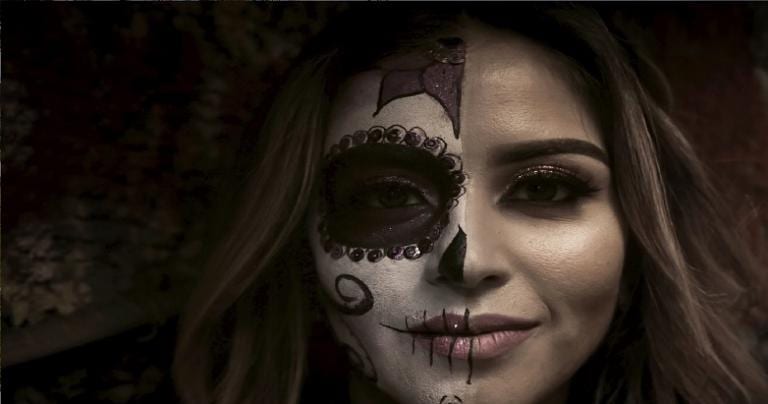
If you dress your child as a saint, take care that your child doesn’t come to think that sainthood is a dress-up. The real saints lived with witches and monsters (I mean problems, not people), and helped transform the world. Saints are messy like Incarnation and Inspiration folks and they said “NO!” plenty of times. Saints are works in process down here.
When holiness becomes dress-up, watch out! Because then saints get scarce, and when that happens, our society dies. When that happens a misogynistic, racist blowhard can say Jesus-ey things and we Christians, in sincere stupidity, imagine therefore he must be pro-life and God’s choice for president. The result is that the devil rules, parading on display everywhere, and we are blind to it.
In my view dress-up can be insidious when it smacks of dishonesty. When holiness becomes a dress-up, when orthodoxy is nothing but parroting verbal orthodoxy, when racism is found comfortably seated in our parishes, we are in serious trouble!
A Halloween Examen
Do you say that things like Halloween do not honor God in any way? Do you cringe at feminine images used as symbols for the divine and cheer at their destruction? But why, when God is the God of all THINGS, not just the patron deity of easily recognizable and explicitly Christian things. Watch your emotional reactions as you go through these questions.
When you say you want to honor God rightly, what do you mean by “honor”? Do you mean explicit worship, with explicit and obvious mentions of God, Jesus, and the Spirit? But many things we know and cherish in human experience don’t do this either. I’m talking about goods, human things that we need. Does piety consist of obsessing over the bluntly religious, especially those devotional items with which you remain comfortably complacent? What a poverty to see that way! What a detriment to spiritual growth!
The challenge of seeing Halloween, Harry Potter, and all things including those destroyed feminine images rightly comes through a sacramental vision. This way of seeing is given to the Christian with “eyes of faith.” It helps us to see what this or that is REALLY all about, to experience the Beyond in our midst. In our Tradition, what are all things really about anyway (Genesis 1:31; John 1:3, 3:16-17; Colossians 1:15-20; Revelation 21:5)? Isn’t Christ the meaning of all things?
But What About Satanism?
Make-believe witches and warlocks provide an outer hideousness children wear on Halloween. I’m sure that were we to look hard enough, we might just find a few troubled people who really celebrate October 31st in a Satanic manner. But don’t we Americans also celebrate December 25th in a Satanic way as “material gift-day” and turn Advent into “Consumer Weeks”? How godly is our Thanksgiving with sumptuous spreads and rushing out to get in first place for Black Friday sales as people starve to death in our world?
Sacramentality keeps us real, Catholics. It helps us not to throw the baby out with the bathwater. Right judgment of something is founded on the thing as it exists normally, not in a perturbed state. Let’s not destroy things, dump them into the river of ignorance and hatred. Let’s bring out the good that is already there.
And if you are too busy looking for Satan in Count Dracula, Heavy Metal, and 666 nonsense, you will miss the really Satanic things going on. By that I mean the avalanche of social problems crashing in on us as we sit neatly and nicely in our well-dressed, well-groomed, well-fed U.S. Catholic parishes.
If I can find God in spooky Halloween fun, how much more ready is God to be found in a female expression of being human? How does creation and life-giving and the many other ways of being female and/or belonging to a cultural expression different than the accepted “norm” speak about God? Watch your emotional reactions.
The Obfuscated Yet Real Problems
We have big schismatic problems brewing in the Church these days because of Catholic fundamentalism. Whether doctrinal, scriptural, or devotional, various Catholic fundamentalisms have been festering for decades, fueled by the ignorance of popular Catholic speakers and EWTN. When you see the arrogant hatred and YouTube narcissism that tosses those statues into the Tiber, insensitive to other cultural expressions of the holy and ignorant of our iconography and history of enculturation, we are in deep trouble.
Catholic fundamentalism is a dangerous threat to the Catholic faith in the US and throughout the world today. It infects our parishes and homes with the corruption of Catholic values, especially blinding our essential sense of sacramentality. It sees the world as evil and dangerous, needing swift destruction instead of healing.
All fundamentalism discards God being the Creator, Redeemer, and Sanctifier of all things. It looks for grace always in the extraordinary and even the bizarre, forgetting that God is found in the every-day ordinary. It abandons God’s desire for everything and everyone to be saved opting instead for a false God who loves but the few to the damnation of most.
Fundamentalism Litmus Test
Fundamentalists enjoy operating with litmus tests. Here is a litmus test to see if one might be fundamentalist. How can I know if I suffer from the psychological malady that is fundamentalism? Here are a few helpful questions. Try to be honest with them.
Seeing Revelation, Scripture, & Doctrine
Do I enjoy getting into Scott Hahn style “Bible Wars” with different fundamentalists from other Christian traditions? Do I make the Scriptures into a “connect-the-dots” pointing in triumphalist fashion to my own tradition?
When considering revelation, how do I view it? Is revelation exclusively comprised of propositional truths, abstracted to be parroted and severed from a context found in history and culture?
How do I see Church teachings? Do they float in a vast nebula, all bearing equal weight and importance? Am I uninformed that the Second Vatican Council teaches about a “hierarchy of truths” (The Second Vatican Council’s Decree on Ecumenism, n. 11) where some Christian truths are more central, and therefore more important, than others? Am I capable of distinguishing what is essential in this hierarchy? Can I distinguish between what is essential from what is important but not essential? Further, can I see what is merely marginal?
Criticizing Church & Churches
As a Catholic, I should ask and reflect: How do I approach non-Catholic expressions of Christianity? Is my criticism of these other Christian traditions toxic? Can I find only errors on the other side of the Tiber and Bosporus? Is truth synonymous with Roman Catholic truth?
How do I reflect on central issues for Catholics? Do I recognize that the Church today, while in continuity with the Jesus Movement of the first century, nevertheless exists in a continuity within development? Do I accept that the Church is impacted by history and does evolve?
Or do I engage in ahistorical views? For example, do I imagine the ridiculous absurdity that Peter was the first residential and monarchical bishop of Rome? Do I refuse to see any theological evolution in the papacy, romanticizing it as being identical to what Jesus established in and intended for Simon Peter? It’s one thing to say the Petrine ministry is essential; it is quite another to say that a fully-formed papacy was up in running in the 30s CE!
And how do I see the Church? Is a top-down, more-divine-than-human affair? Does Church mean to me hierarchy, and then, only that part of the hierarchy that conveniently agrees with me? Do I confuse the Church with the final Kingdom of God? Do I label fellow Catholics who dare to disagree with me as being confused, faithless, or even heretics?
Really Dangerous Idols
This dangerous way of thinking cemented in many U.S. Catholics is being enabled by more than a few popular figures in Catholic media. We need a reality check. What needs tossing into the Tiber are mental idols that come with Catholic fundamentalism.
Let’s get real, Catholics. There are bigger fish for us to fry than Halloween and Harry Potter—check out how many homeless men and women have been set on fire recently. Look at the racism in our communities. Hear the cries of migrant children in cages. Let’s stop fundamentalist nonsense.
I hope and pray that all of you have a blessed, terrifying Halloween.



